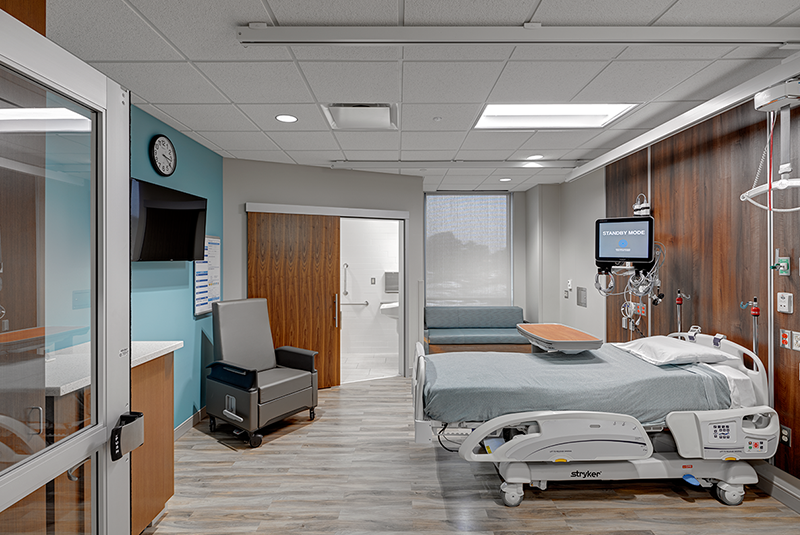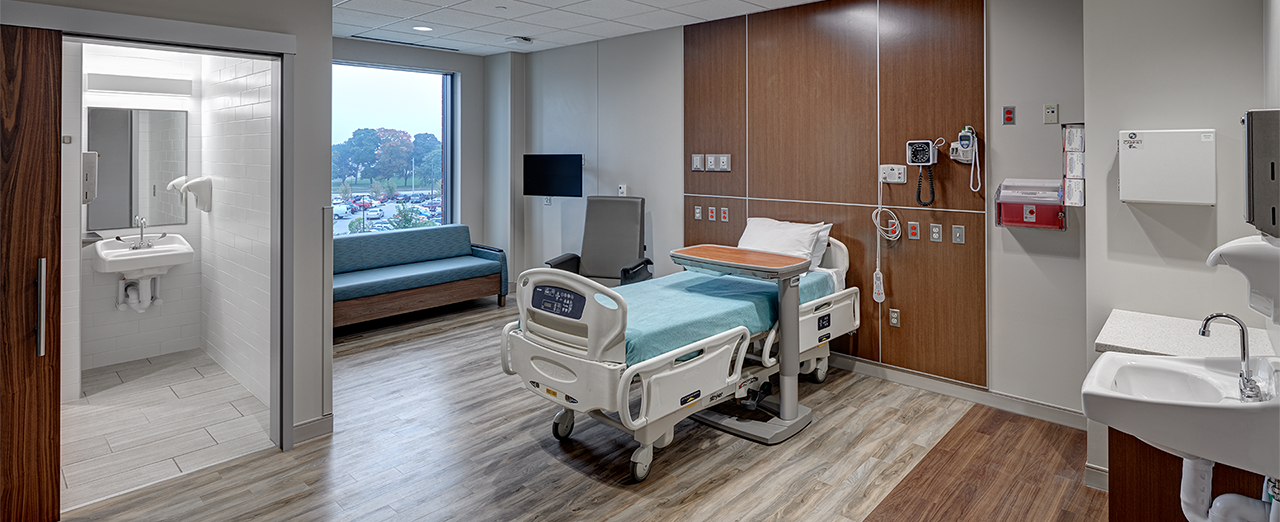
ADA sliding doors from AD Systems can help firms meet and exceed current codes and standards, enabling them to easily design more accommodating buildings. The information below offers a high-level overview of these requirements as well as how commercial sliding doors comply with ADA standards.
What are the ADA requirements for doors?
- Doorways must have a minimum clear opening of at least 32 inches
- If the door is not automatic or power assisted, you must account for minimum maneuvering distances
- Thresholds and floor-level changes cannot exceed certain heights and slopes
- Accessible doors need to have hardware that is easy to grasp/use, and no higher than 48 inches from the ground
- The force needed to open a door cannot exceed certain standards, depending on the type of door
- If the door closes automatically, it must do so relatively slowly
- Operating force for horizontal sliding doors is limited to 5 pounds
- Life Safety limits the use of horizontal sliding doors to rooms with less than 10 occupants in most jurisdictions, unless a swing door is present
How AD Systems’ sliding doors comply with ADA requirements
When thinking through ADA requirements for doors, it can help to break the standards into three stages: opening, opened and closing.
Opening refers to the ease of operation. ADA sliding doors must open with less than five pounds of force for doors, with exceptions granted for the force required to initially overcome the inertia of the door and any latches or devices used to keep the door in a closed position. Further, their hardware should be designed to be used without pinching, twisting, grasping or special knowledge. It should also be attached no more than 48 inches off the ground to be within ADA requirements. These doors can also be equipped with AutoMotion™ automatic operators, which sideline manual operating force and hardware requirements. Automatic operators offer the highest levels of accessibility, with occupants being able to operate doors with the push of a button or even simply a wave. Touchless sensor options also provide high levels of infection control in settings such as hospitals or other high occupancy spaces.
Lastly, because sliding door systems do not have swing arc trajectories, they can easily satisfy perpendicular maneuvering clearance requirements even for oversized doors. They can also mitigate the chance of colliding with a door unexpectedly swinging into a corridor. Together, these features increase the ease of opening, confirming that sliding doors can be operated by wheelchair users and those with limited mobility.
In addition to opening requirements, a door should also pose no challenges when fully opened. First and foremost, door openings must be at least 32 inches wide, measured from the edge of the door to the opposite frame, to accommodate all occupants. ADA sliding doors comply with this standard and more. These doors can be specified with larger openings without sacrificing useable square footage to swing arc trajectories. Sliding doors with top-hung roller hardware also reduce trip hazards, so openings can be more easily navigable for all.
The last stage of accessible door design is closing. AD Systems’ sliding door solutions offer soft-closing mechanisms to ensure the doors close with reduced force and speed while also meeting ADA requirements. Sliding doors that comply with ADA standards can also use optional pull spring self-closers to close automatically but do so relatively slowly. Finally, automatic operators such as AutoMotion™ allow occupants to use these doors without manually opening or closing them, improving a building’s overall accessibility.
ADA Compatible Door Systems
- Satisfy opening width requirements without reduced area for swing path or approach clearances
- Designed with hardware that can be operated without pinching, twisting or grasping or special knowledge
- Maintain required handle clearances
- Available as single action egress solutions
- Ease operating force requirements with AutoMotion™
- Eliminates exposed floor track or door guides for more accessible design
- Ensure doors closes at safe speeds with soft closer designs
Going beyond what is required: optional features that enhance accessibility
ADA sliding doors can increase the ease with which an occupant opens, crosses and closes a door. Cutting-edge technology allows these doors to exceed ADA requirements to support more welcoming buildings and opening a world of design possibilities.
For example, ExamSlide™ can feature a Barrier Free design that splits the top rail to accommodate bed lifts. When this option is incorporated in ADA compliant bathrooms, it can help create a more accessible space overall. Further, AD Systems can work with a design team to create custom solutions that enhance easy navigation throughout an entire facility.
Available as a single-source solution, commercial sliding doors from AD Systems can simplify the process of designing welcoming and aesthetically pleasing spaces.







